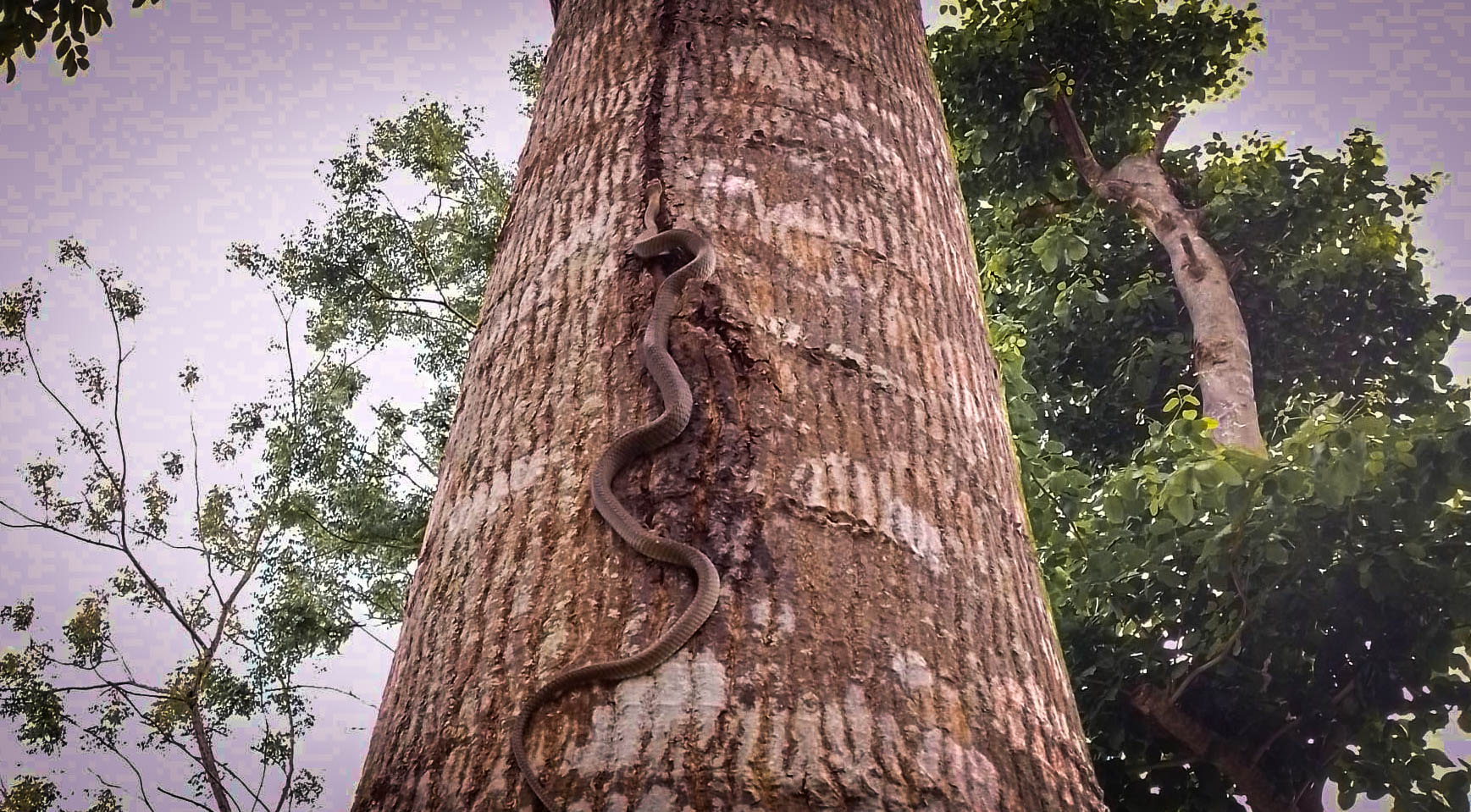There have been reports recently of strange sightings of relatively small yet elusive snakes lurking in certain areas of the campus. Some have reported seeing it slithering through the grass and trees of the VSU Eco Park, while others claim that it has been spotted scaling the premises of the Department of Liberal Arts and Sciences (DLABS). Words about the sightings were quick to spread, and so did panic. But what do we know about these reptiles? And does it pose a danger to the Viscan community?
Predation in Action
It’s not that rare to see snakes in VSU. In fact, snake sightings have become somewhat prominent considering the foliage of nature reserves existing within the campus. There are a plethora of reasons why snakes would sometimes appear in places swarmed by people.
First one is habitat. Considering the location of the university, the campus grounds provide a suitable habitat for snakes. Many species of snakes are adapted to living in grassy or wooded areas, and the campus has a lot of green spaces, which makes for a great home environment for these reptiles.
Another plausible reason is that of prey hunting. Snakes are carnivorous and often feed on small mammals, birds, and other creatures that may be found on the campus. If there is an abundance of prey in the area, it could be drawing the snakes in.
Snakes are cold-blooded reptiles and rely on external sources of heat to regulate their body temperature which is why the changes in climate might drive them to show up in areas least expected. They often bask in the sun to warm themselves up, and may do so on rocks, trees, or in grassy areas where they can absorb the warmth of the sun. With the university’s ever-changing weather system, particularly in times of rainy days, it lures snakes out from their abode and looks for warm areas, in which VSU establishments and clusters of trees make for a perfect hotspot.
In this particular case, it could have been that after a day of raining, snakes felt the need to get out of their environment to look for a warm area, in which the VSU Eco park and other adjacent areas of college departments have freely provided.
It's also possible that snakes are simply passing through the campus by accident, and are not intentionally seeking out the area. Snakes are mobile creatures and may move through a variety of habitats as they search for food, mates, or suitable places to rest.
Lastly, it's the start of the breeding season. It is likely and common to see more mature snakes come out of their habitats to seek for a mating pair. It is during this time when snakes become more active and even aggressive, especially males who may compete for a female’s attention. Additionally, breeding can cause changes in a snake's behavior and movement patterns, which may lead them to migrate to new areas in search of suitable mates. However, it's important to note that these snakes are not out to attack people and most species will avoid humans if given
the chance, therefore they should be left alone. They only feel the need to bite once they are disrupted or threatened.
How to recognize snakes?
A lot of students have weighed in on the intriguing topic with some protruding that these snakes are harmless and non venomous. They have also openly classified these reptiles as the Paradise Tree Snakes, which is, according to scientific data, mildly venomous snakes that are commonly found in bushy and mountainous areas of Southeast Asia. But how do one recognize whether a snake is venomous or not?
Venomous snakes are usually characterized by a rattling tail, elliptical eyes (appears in slit-like similar to cat eyes), sharp fangs, and a triangular head. Another would be their color. Venomous snakes usually have a bright and colorful pattern of body palette. However, there are always exceptions to the rule. A snake does not necessarily need to have these defining features, which means that venomous snakes can be characterized with one or more of these features depending on the type of species.
On the other hand, non venomous snakes commonly lack the fangs, and are usually solid in color which entails that they only feature a single dominant color throughout their body. There may be variations, of course, but overall, the pattern is uniform. Moreover, unlike venomous snakes with triangular heads, non-venomous ones usually have round shaped heads. The heads won’t be angular or have a large, sharp jawline due to the lack of venom glands. Lastly, they have rounded pupils similar to the human eye.
These characteristics may not be always visible from afar which is why it is not advisable for people to go near a snake just to identify its features. Remember, when in doubt, it’s safest to just avoid the snake.
Regardless of the reason, it's important for people to be aware of the potential presence of snakes on the campus and to take appropriate precautions to avoid any potential encounters or bites. It's also important to remember that many species of snakes are harmless and play important roles in the ecosystems.


